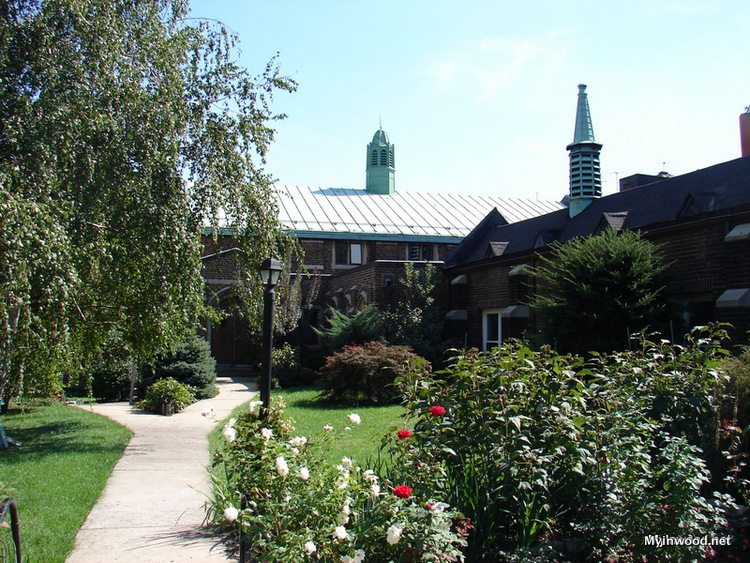Inwood is full of historic treasures—single family homes, a marble arch from the 1850’s, even a mile marker from the old Post Road. Below is a list of endangered sites in the neighborhood. Not one of these locations is protected by landmark status. None have any signage at all.
I’m often asked, “What would you protect in the neighborhood” if given historic designation powers?
Here’s my list:

This 1850’s arch once served as the entrance to the historic Seaman-Drake estate. The arch, constructed of locally quarried marble, is the second oldest structure in the neighborhood. Only the Dyckman House is older. Privately owned, the arch could be torn down tomorrow. (Broadway and West 216th Street)

Built by renowned architect James O’Connor in 1912, the home served as the private residence of William Hurst, his wife, Minnie, and their ten children. Now owned by the Seventh Day Adventists, who run the school next door, the home has been bricked up since the 1980’s. Like many sites on this list the home has zero preservation status. (West 215th Street and Park Terrace West)

On a quiet stretch of Broadway, across from Fort Tryon Park, on the northern end of Manhattan, rests a forlorn monument to a grand automotive era. Some say the old Packard dealership might soon be razed. Torn down. Wiped off the map. Today developers have their sights on the aging beauty. Her fate remains undetermined.

These smaller homes tucked in among taller apartment buildings give Inwood a unique feel, but they have no historic designation. Any one of them could be torn down to make room for development. (Various locations around Inwood)
Holy Trinity Church

The church finds itself in a perilous position due to an ever-dwindling congregation. Will the Episcopal church, which has served Inwood since the 1920s, survive? Time will tell.

On 215th Street, near Tenth Avenue, sit three massive smokestacks, which have towered over the Inwood skyline, east of Broadway, since 1934. Would these familiar features of Inwood’s skyline survive a neighborhood-rezoning plan?

This often-overlooked relic of a gaslight era is one of two 1860’s vintage lampposts to survive in the city of New York. (West 211th Street and Broadway)
12-Mile Marker of old Post Road

This anonymous mile marker, its number wiped clean by the ravages of time, once told travelers they were 12 miles from City Hall in downtown Manhattan. Similar markers ticked off the miles to Albany in a path now followed by Route 9. (Broadway entrance to Isham Park near West 212th Street)

Covered by an auto-body shop and public school this might be one of the saddest historic locations in the neighborhood. Once the burying ground for the slaves of Inwood’s early families, this site has been neglected and forgotten. A plaque, recognizing the significance of the site, at the very least, seems in order.









After it was an auto showroom the Packard Building housed Manhattan Lanes. The biggest bowling alleys in NYC. 62 lanes if I remember correctly. Regular TV show from there with black lanes and white balls. Don Carter shot a 154 on TV. Humiliating.
I grew up in Inwood, living at both 172 Sherman Ave and then 570 West 204th street, then the family moved up to NH and there we were for 20+ yrs. I was in my neighborhood back in 2009, and was appalled at the neighborhood and what it has devolved into. I kept telling the person that I had brought, that the neighborhood was not like this when I was growing up. I wanted to walk around, but instead drove my rental car. I dd park and walk down towards the park on Dyckman, but didn’t continue on further. I love the information at this site. I never knew that there was an old slave cemetery on 10th. What is wrong with some that they pave over a site such as this and disregard the persons buried there? for what???? Money? That is disgusting, and non feeling about basic humanity.
I believe that Hurst House may also have served as a Catholic convent, back in the ’60s and ’70s, when the school you mention was Sacred Heart high school for girls.
And, of course, in the continuing repurpose of buildings, Manhattan Lanes aka Packard became the NYC department of Social Services/Welfare office in the early 70’s My mom worked there.